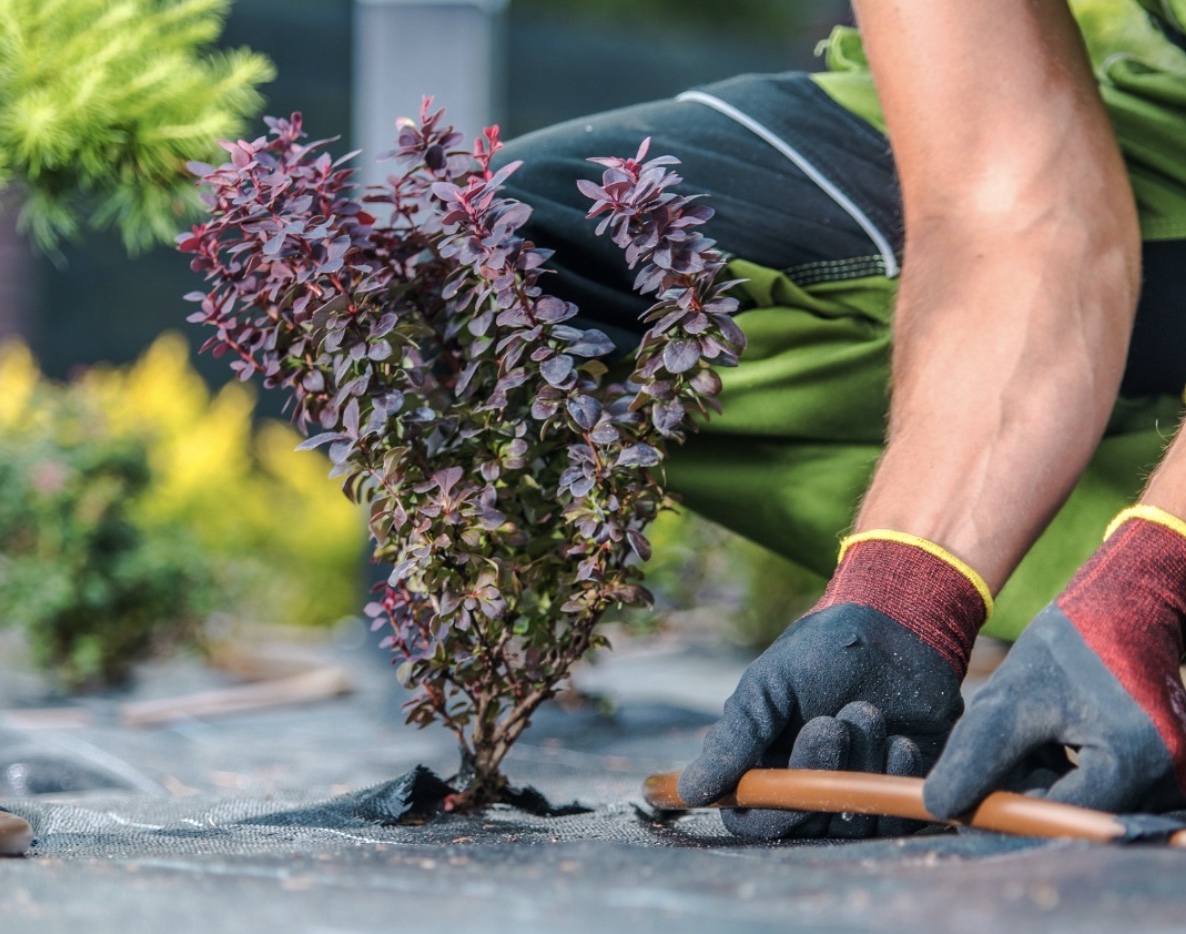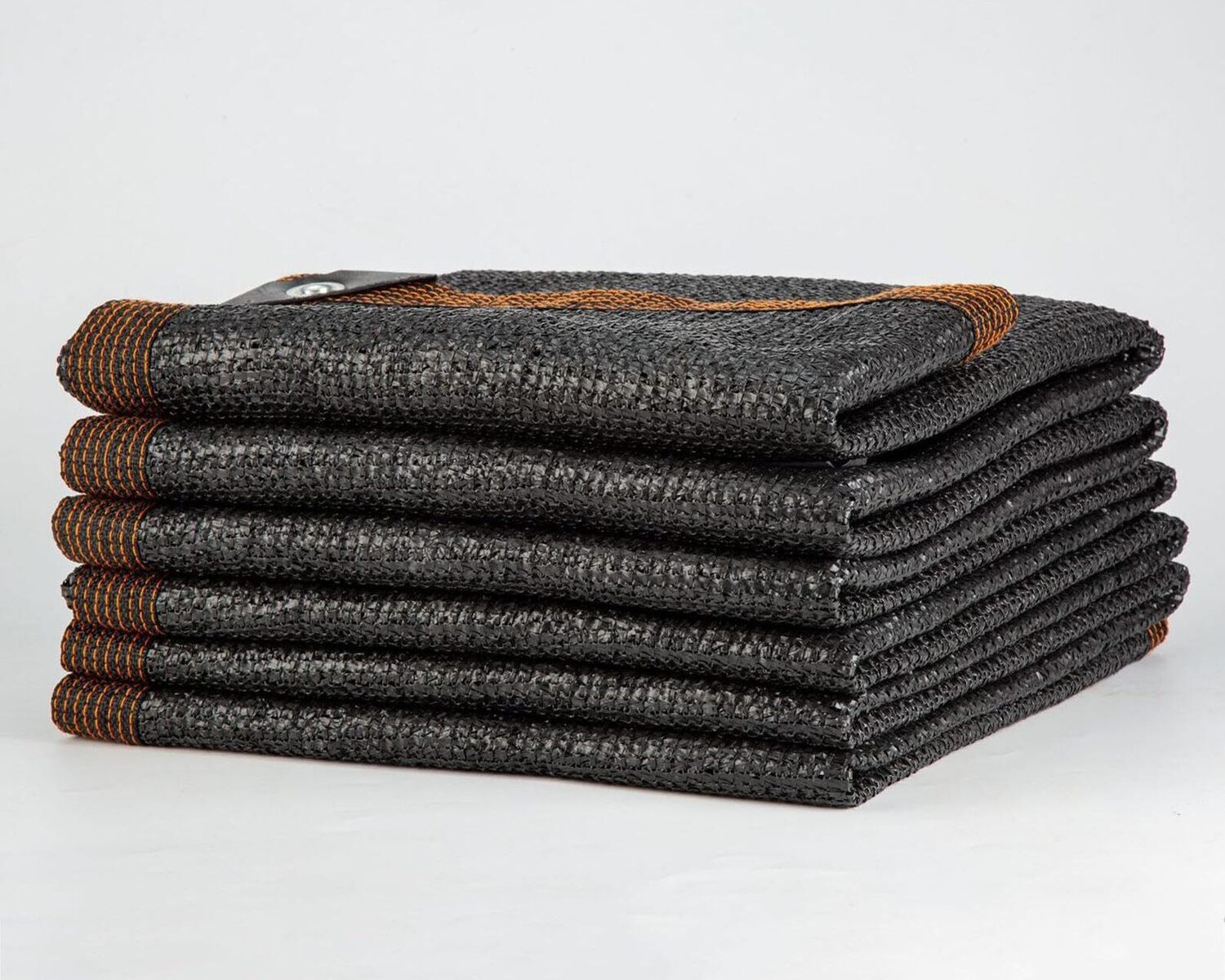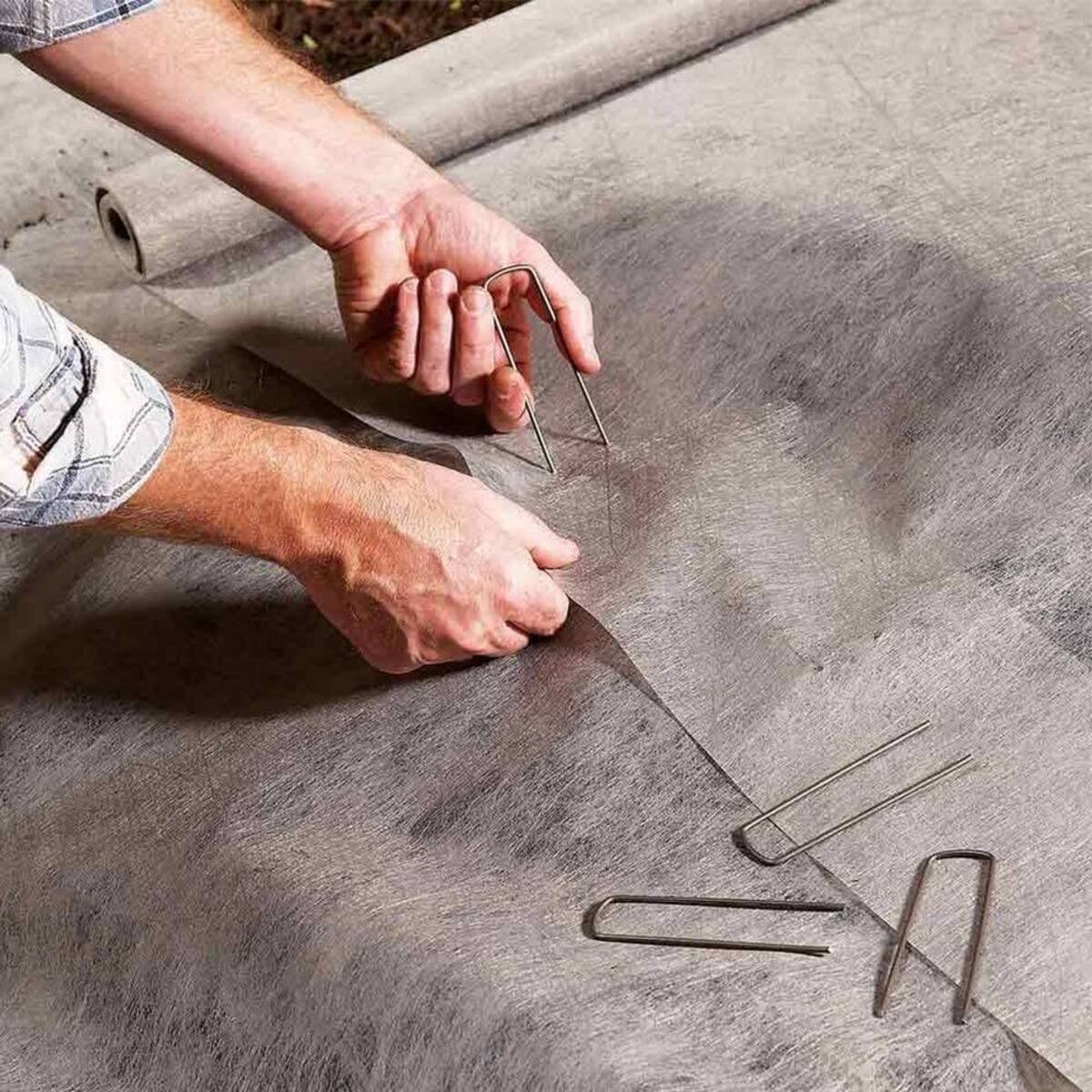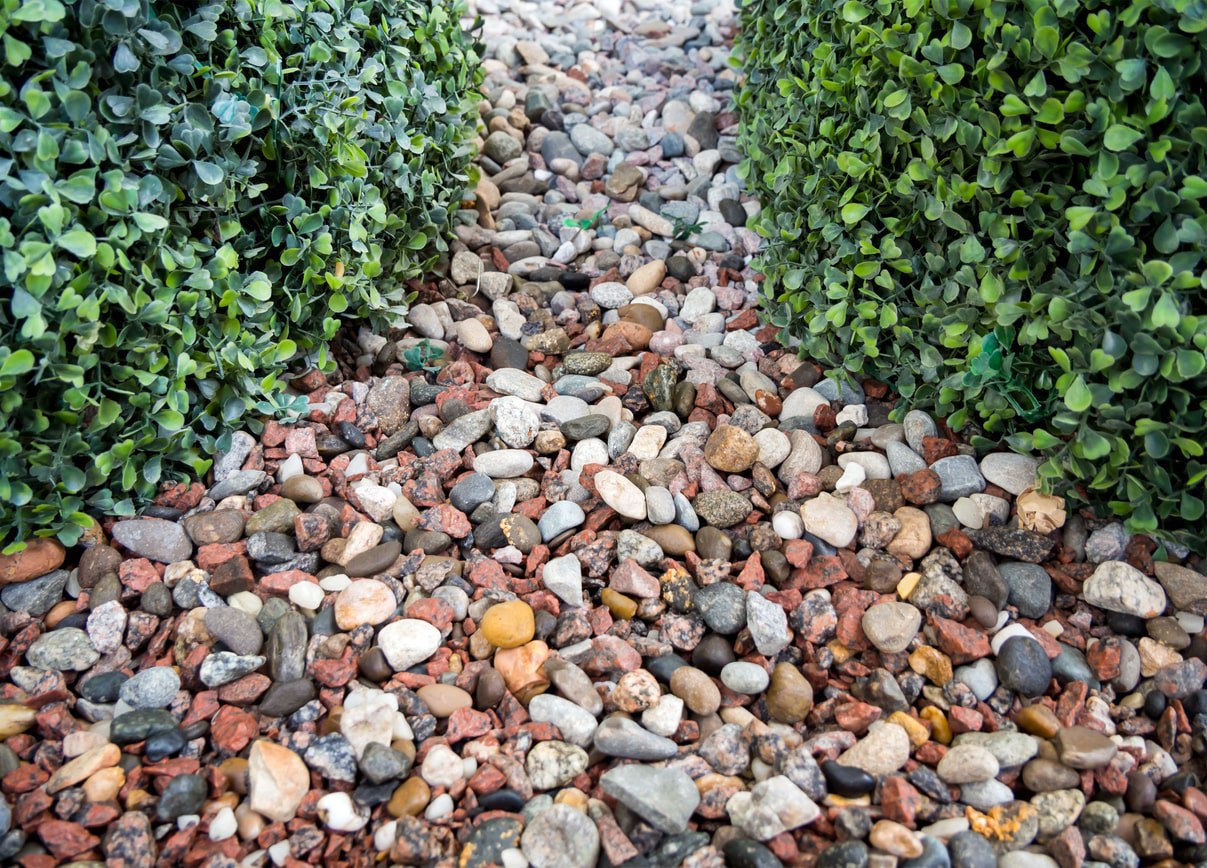Home>Reviews>Product Reviews>What Is The Best Landscaping Fabric To Prevent Weeds


Product Reviews
What Is The Best Landscaping Fabric To Prevent Weeds
Modified: February 8, 2024
Looking for the best landscaping fabric? Read our comprehensive product reviews to discover the top choices for preventing weeds and maintaining a beautiful garden.
(Many of the links in this article redirect to a specific reviewed product. Your purchase of these products through affiliate links helps to generate commission for Chicagolandgardening.com, at no extra cost. Learn more)
Table of Contents
Introduction
When it comes to maintaining a beautiful and well-manicured garden or outdoor space, one of the biggest challenges faced by homeowners is keeping those pesky weeds at bay. Weeds not only detract from the overall aesthetic appeal of your landscaping, but they also compete with your plants for nutrients and water. The solution? Landscaping fabric.
Landscaping fabric, also known as weed barrier or weed control fabric, is a material that is placed on the soil surface to prevent weed growth. It acts as a physical barrier, blocking sunlight and suffocating the weeds underneath. Used in conjunction with mulch or decorative stones, landscaping fabric not only helps in weed prevention but also aids in moisture retention, erosion control, and temperature regulation of the soil.
In this article, we will explore the benefits of using landscaping fabric, factors to consider before choosing the right one for your needs, and discuss the different types of landscaping fabrics available in the market. Additionally, we will compare popular landscaping fabrics and identify the best landscaping fabric for weed prevention.
With the right landscaping fabric, you can say goodbye to hours spent on pulling out weeds, and hello to a low-maintenance and weed-free outdoor space. So, let’s dive in and explore the world of landscaping fabric to find the best solution for your weed woes.
Benefits of Using Landscaping Fabric
Using landscaping fabric offers several benefits that make it an essential tool in weed prevention and garden maintenance. Let’s explore the advantages of incorporating landscaping fabric into your outdoor space:
- Weed Control: The primary benefit of landscaping fabric is its ability to prevent weed growth. By creating a barrier that blocks sunlight, landscaping fabric effectively inhibits weed germination and growth, reducing the time and effort spent on manual weed removal.
- Moisture Retention: Landscaping fabric allows water to penetrate through its porous surface while minimizing evaporation. This helps to retain moisture in the soil, promoting healthy and vigorous plant growth and reducing the need for frequent watering.
- Soil Erosion Control: By creating a protective layer over the soil, landscaping fabric helps to prevent soil erosion caused by heavy rain or wind. It keeps the soil in place, preserving the integrity of your landscape and preventing the loss of valuable topsoil.
- Temperature Regulation: Landscaping fabric acts as an insulating layer, regulating soil temperature by keeping it cooler in the summer and warmer in the winter. This helps to create a more favorable environment for plant growth and can mitigate temperature extremes that may stress or damage plants.
- Reduces Weed Competition: Weeds compete with your plants for essential nutrients, water, and sunlight. By significantly reducing weed growth, landscaping fabric minimizes competition, allowing your plants to flourish and thrive.
- Improves Aesthetic Appeal: Landscaping fabric provides a neat and tidy appearance to your garden or outdoor space. When covered with mulch or decorative stones, the fabric becomes virtually invisible, giving your landscape a polished, well-maintained look.
- Time and Labor Savings: Installing landscaping fabric saves you valuable time and effort in weed management. With fewer weeds to contend with, you’ll spend less time pulling and spraying weeds, giving you more time to enjoy your garden.
By utilizing landscaping fabric, you can enjoy a weed-free garden, healthier plants, and reduced maintenance, all while enhancing the overall visual appeal of your outdoor space. Now that we’ve explored the benefits, let’s delve into the key factors to consider before choosing the right landscaping fabric for your needs.
Factors to Consider Before Choosing Landscaping Fabric
Selecting the right landscaping fabric is crucial to ensure its effectiveness and longevity in preventing weeds. Here are some key factors to consider before making your choice:
- Type of Weed Control: Determine the level of weed control you need. If you have a severe weed problem, opt for heavy-duty, woven landscaping fabric. For moderate weed issues, lighter-weight fabrics may suffice.
- Permeability: Consider the permeability of the fabric. It should allow water and nutrients to pass through while preventing weed growth. Look for fabrics with pores that are small enough to block weed seeds but large enough to facilitate proper drainage.
- Durability: Choose a fabric that is durable and resistant to tearing, UV rays, and degradation from chemicals or extreme weather conditions. This ensures that the fabric will provide long-lasting weed control without the need for frequent replacements.
- Size and Coverage: Determine the size and coverage area you need. Measure the space accurately and choose a fabric that is wide and long enough to cover the designated area without leaving gaps or overlaps.
- Ease of Installation: Consider how easy the fabric is to install. Look for options that come with clear installation instructions and are easy to cut, shape, and secure to the ground. Some fabrics come with pre-made planting holes, which can make the installation process even simpler.
- Compatibility with Plants: Consider the types of plants in your garden. Some fabrics may hinder the growth of certain plants that require spreading or self-seeding. If you have plants that need to grow horizontally, choose a fabric that allows for their expansion.
- Aesthetic Appeal: If visual appeal is important to you, opt for a landscaping fabric that is subtle and blends well with your landscape design. Choosing a color that matches or complements your mulch or decorative stones can help create a cohesive and attractive look.
- Cost: Lastly, consider your budget. Landscaping fabrics come in a range of prices, so weigh the cost against the fabric’s quality and durability to find the best value for your money.
By carefully considering these factors, you can choose a landscaping fabric that aligns with your specific needs and ensures effective and long-term weed control. Now that we understand the important factors, let’s explore the different types of landscaping fabrics available in the market.
Different Types of Landscaping Fabrics
There are several types of landscaping fabrics available, each offering different features and benefits. Understanding the different options will help you make an informed decision. Here are the primary types of landscaping fabrics:
- Woven Fabric: Woven landscaping fabric is made from polypropylene material and is known for its durability. It is tightly woven, making it tear-resistant and ideal for heavy-duty weed control. This type of fabric allows for excellent water and air permeability, ensuring proper drainage and reducing the risk of root rot.
- Non-Woven Fabric: Non-woven landscaping fabric is made from bonded fibers that are entangled together using heat or adhesives. It is generally available in varying thicknesses, with thicker fabric offering better weed suppression. Non-woven fabrics are easy to cut, shape, and install, making them a popular choice for both commercial and residential use.
- Permeable Fabric: Permeable or porous landscaping fabric is designed to allow water and air to pass through easily while preventing weed growth. It is typically made from a combination of woven and non-woven materials and is best suited for areas that require optimal drainage and moisture permeability, such as gardens and flower beds.
- Biodegradable Fabric: Biodegradable landscaping fabric is an environmentally friendly option that is made from natural materials, such as jute or hemp. It is designed to break down over time, providing temporary weed control and soil erosion prevention. This type of fabric is ideal for organic gardening or when a temporary solution is needed.
- Plastic Mulch Film: Plastic mulch film is a type of landscape fabric often used in agricultural applications. It is a thick, opaque plastic sheet that is laid on the soil surface before planting. The plastic mulch prevents weed growth, conserves soil moisture, and regulates soil temperature. However, it may not be suitable for all landscaping purposes due to its appearance.
Each type of landscaping fabric has its own advantages and is suitable for specific applications. Consider your specific needs, budget, and gardening goals when choosing the right type of fabric for your project. Now, let’s move on to comparing popular landscaping fabrics to help you make an informed decision.
Comparison of Popular Landscaping Fabrics
To assist you in selecting the best landscaping fabric for your needs, let’s compare some of the popular options available in the market today:
- Woven Fabric: Woven landscaping fabric is highly durable and offers excellent weed control. It is ideal for heavy-duty use and areas with high foot traffic. However, it may be more expensive compared to other options and may require professional installation.
- Non-Woven Fabric: Non-woven fabric is easy to install and provides good weed suppression. It is available in various thicknesses, allowing you to choose the level of weed control required. However, it may not be as durable as woven fabric and may break down over time.
- Permeable Fabric: Permeable landscaping fabric is ideal for areas that require optimal drainage and water penetration. It offers both weed control and moisture management. However, it may not be as effective in preventing deep-rooted weeds from infiltrating the soil.
- Biodegradable Fabric: Biodegradable fabric is an eco-friendly option that breaks down over time, eliminating the need for removal. It is best suited for short-term weed control and can improve soil quality as it decomposes. However, it may not be as durable as synthetic fabrics.
- Plastic Mulch Film: Plastic mulch film provides effective weed control, moisture retention, and temperature regulation. It is commonly used in agricultural applications but may not be aesthetically pleasing for home landscaping. Additionally, it is not biodegradable and requires proper disposal.
Consider your specific requirements and preferences when comparing these landscaping fabrics. Pay attention to factors such as durability, ease of installation, weed control effectiveness, and compatibility with your existing landscaping design. By carefully weighing the pros and cons of each type, you can select the best option for your outdoor space.
Now that you have a better understanding of the different types of landscaping fabrics and have compared popular options, let’s move on to the final section to discover the best landscaping fabric for effective weed prevention.
Best Landscaping Fabric for Weed Prevention
Choosing the best landscaping fabric depends on various factors, including your specific needs, budget, and gardening goals. However, based on their performance and popularity, the following options are considered among the best for effective weed prevention:
- Dewitt Pro 5 Weed Barrier: This heavy-duty woven fabric offers excellent weed control and durability. Its five-layer design provides superior strength and tear resistance. The fabric is permeable, allowing for proper water drainage, and it is UV resistant, ensuring a long lifespan.
- Made from high-quality non-woven fabric, this option provides reliable weed suppression and is easy to install. It is permeable and allows for proper airflow and water penetration. The fabric is also UV stabilized to withstand harsh sunlight.
- Scotts Pro Fabric: This woven landscaping fabric offers exceptional weed control while allowing for adequate water and air permeability. It is made from durable material that resists tearing and UV damage. The Scotts Pro Fabric is easy to install and is suitable for both professional and DIY landscapers.
- Eco-Friendly Garden Weed Barrier: If you prefer biodegradable options, this fabric is a great choice. It is made from natural materials like jute and is designed to break down over time while effectively suppressing weeds. This eco-friendly fabric is ideal for organic gardening and temporary weed control.
- Landmaster PolyPro 55 Fabric: This woven fabric offers heavy-duty weed control and is puncture-resistant. It is designed to block sunlight and prevent weed growth effectively, while still allowing water and air to penetrate the soil. The Landmaster PolyPro 55 Fabric is a reliable choice for long-term weed prevention.
Remember, the best landscaping fabric for weed prevention will depend on your specific needs and gardening requirements. Consider factors such as durability, permeability, and ease of installation when making your decision. Additionally, always follow the manufacturer’s recommendations for installation and maintenance to maximize the fabric’s performance and longevity.
Now that you are equipped with knowledge about the best landscaping fabric options, you can confidently choose the one that suits your needs and maintain a weed-free and visually appealing outdoor space.
Conclusion
In conclusion, landscaping fabric is a valuable tool for weed prevention and maintaining a pristine outdoor space. By acting as a physical barrier, it blocks sunlight and suffocates weeds, reducing the need for manual weed removal and ensuring healthier plant growth. Additionally, landscaping fabric helps in retaining moisture, controlling soil erosion, regulating soil temperature, and enhancing the visual appeal of your landscape.
Before choosing the right landscaping fabric, consider factors such as the type of weed control needed, permeability, durability, size and coverage, ease of installation, compatibility with your plants, aesthetic appeal, and cost. By carefully weighing these factors, you can select the most suitable fabric for your specific needs.
There are different types of landscaping fabrics available, including woven fabric, non-woven fabric, permeable fabric, biodegradable fabric, and plastic mulch film. Each type offers distinct features and benefits, so it’s important to consider their characteristics and choose accordingly.
Based on their performance and popularity, some of the best landscaping fabrics for weed prevention include Dewitt Pro 5 Weed Barrier, Agfabric Landscape Ground Cover, Scotts Pro Fabric, Eco-Friendly Garden Weed Barrier, and Landmaster Polypro 55 Fabric. These options offer reliable weed control, durability, and proper water and air permeability.
By using the right landscaping fabric and implementing proper installation and maintenance, you can enjoy a low-maintenance and weed-free outdoor space. Spend less time battling weeds and more time enjoying the beauty of your garden. Choose the best landscaping fabric for your needs and create a landscape that is not only aesthetically pleasing but also healthy and thriving.
Investing in landscaping fabric is a smart decision that will save you time, effort, and frustration in the long run. With the right fabric, you can achieve weed-free and well-maintained landscaping that enhances the beauty and value of your property.
So, why wait? Explore the world of landscaping fabric, consider your specific needs, and make an informed choice to transform your outdoor space into a weed-free paradise.






